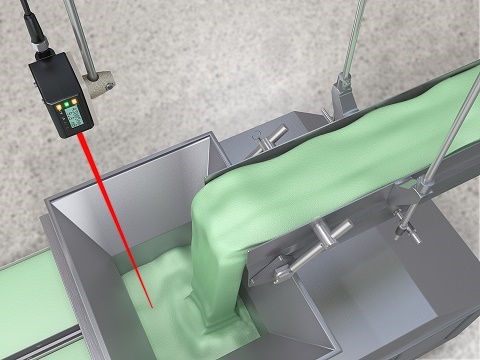|
|
 |
 |
 |
 |
| |
Laser and Radar – A Long Distance Love Affair
18
December
2017
|
| |
 As a world leader in the production of optoelectronics, Banner Engineering has an in-depth understanding of the capabilities and also the limitations of standard photo-electric sensors. A study of the application requirements and the environment in which it occurs can lead engineers to seek an alternative solution. Fortunately Banner’s expertise is by no means limited to simple photoelectric sensors and a very comprehensive selection of laser and radar sensors is available to fill the gaps.
As a world leader in the production of optoelectronics, Banner Engineering has an in-depth understanding of the capabilities and also the limitations of standard photo-electric sensors. A study of the application requirements and the environment in which it occurs can lead engineers to seek an alternative solution. Fortunately Banner’s expertise is by no means limited to simple photoelectric sensors and a very comprehensive selection of laser and radar sensors is available to fill the gaps.
So when is it better to use a laser device over a standard LED photoelectric?
Applications where light is required to travel great distances are generally solved using laser sensors, here’s why -
Both laser and LED use a diode to generate the light, in laser technology the laser then bounces this light back and forth within its housing to generate more of the same wavelength of light (monochromatic, single colour), and more critically all the waves are in line with each other (coherent). LEDs also generate near monochromatic light, they have a broader spectrum of wavelengths than lasers but the critical feature is that the light is incoherent, the wavelengths are randomly produced.
All natural light and most man-made light is incoherent and has many wavelengths which is why it spreads out from its point source as it travels, laser light remains in a tightly focused beam over great distances.
It is this coherence of laser light that gives laser sensors their unique property of a very narrow beam that can travel great distances without spreading out, making them especially suited for certain types of application and a very poor choice for others.
Target materials and textures also play an important part in sensor selection. For example the LTF Series of laser distance sensors, from Banner, are designed to accurately measure targets at distances up to 12 metres. They provide reliable detection regardless of colour or material. The dynamically adjusted laser power increases output for dark targets or objects at steep angles while reducing power for shiny ones, providing accurate measurements across a wide range of challenging targets.
So where does radar fit in?
All sensing disciplines have an “Achilles heel”. For example, ultrasonic devices struggle to operate correctly in high winds as the sound wave emitted and received back to the unit can literally be blown off course, resulting in poor response. Similarly, most photo-electric sensors when used outside can suffer the effects of adverse weather – snow, fog, heavy rain and humidity. Even good weather can present problems as bright sunlight can affect correct operation. In addition a build- up of dust and dirt on the lens will impede accurate sensing.
Radar sensors are unaffected by wind, rain, fog, light, humidity or air temperatures (operating temperatures are between -40 and +65 degrees.
Radar sensors use Frequency Modulated Continuous Wave (FMCW) radar to reliably detect moving or stationary targets.
Their reliability over long distances in extreme weather conditions make radar sensors the ideal choice for collision avoidance on board mobile equipment such as reach stackers, forklifts, and mining vehicles.
The Q120RA range from Banner has a narrow beam pattern and will detect objects from 1 to 40 metres. It has two independently adjustable sensing zones and its robust construction make it an ideal choice for port crane anti-collision and train detection applications.
By contrast the QT50RAFQ is a wide angle device with a total beam angle of 90 degrees, used extensively in traffic monitoring, car parking and road toll applications.
In the UK, Turck Banner Ltd are able to offer sensing solutions across all industry sectors. Furthermore, the comprehensive choice of laser and radar solutions lend weight to the company’s claim that, in the world of industrial sensing – Distance is no object.
For more information, please contact:
George Perkins
Marketing Executive
Turck Banner Ltd
Blenheim House
Hurricane Way
Wickford
Essex
SS11 8YT
Tel: 01268 578888
Email: george.perkins@turckbanner.com
Web: www.turckbanner.co.uk |
|
|
| |
FactoryEquipment.com are not responsible for the content of submitted or externally produced articles and images.
Click
here to email FactoryEquipment.com about any errors or omissions contained within this article. |
| |
|
 |
|
 |
 |
|